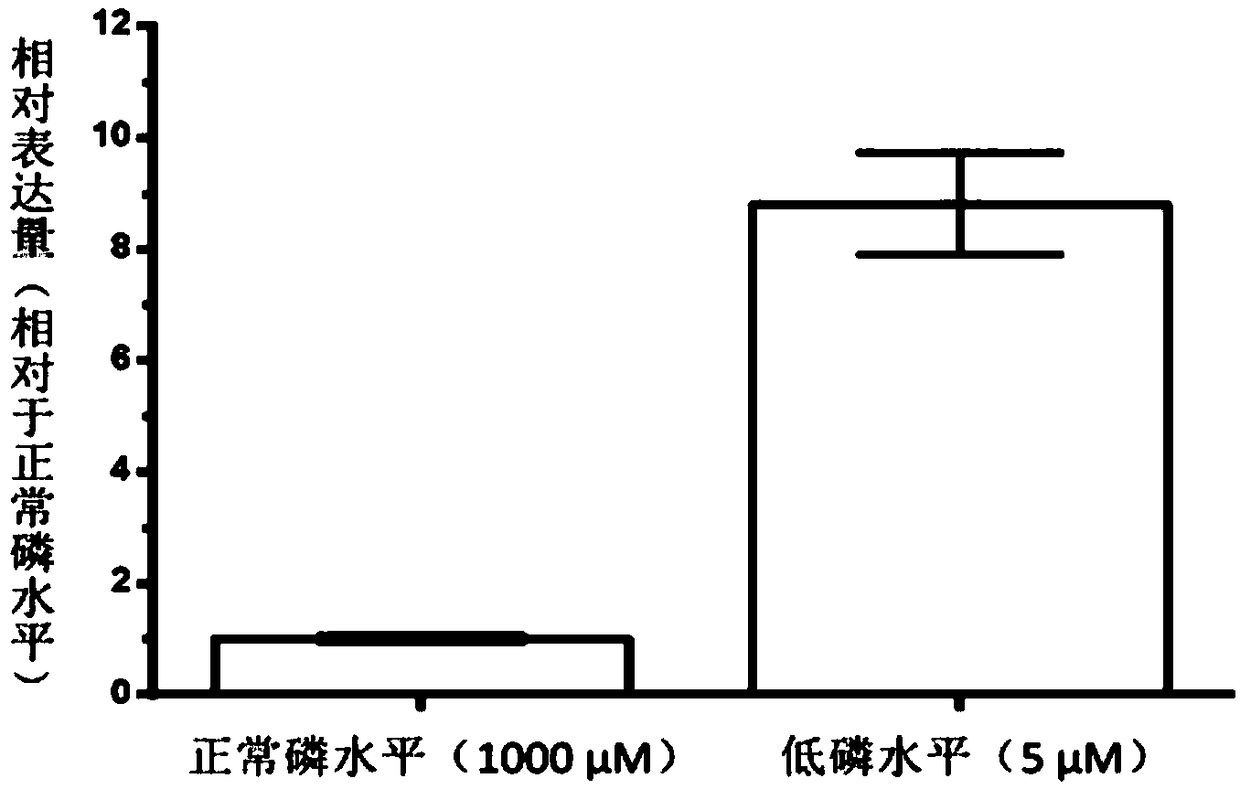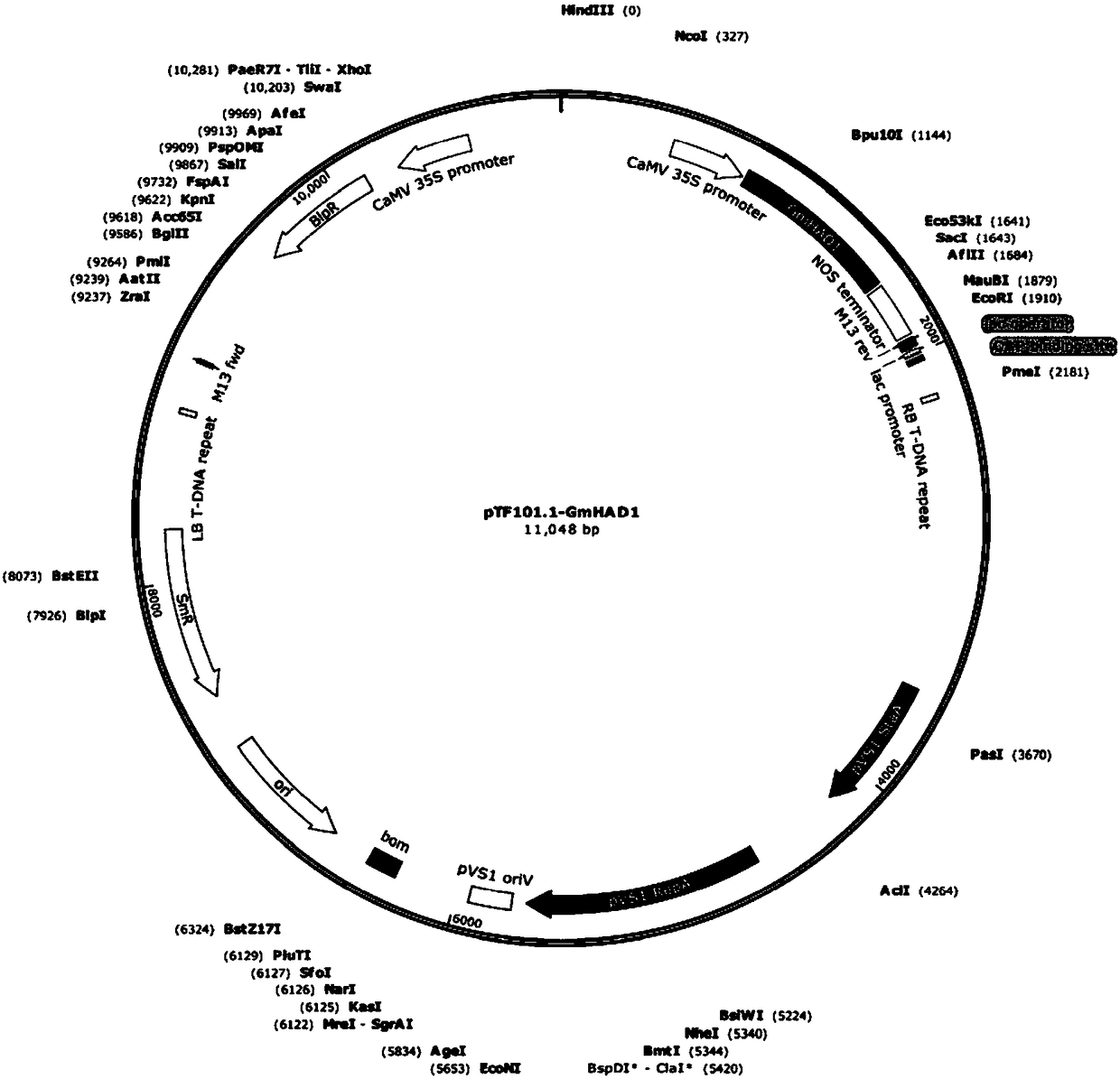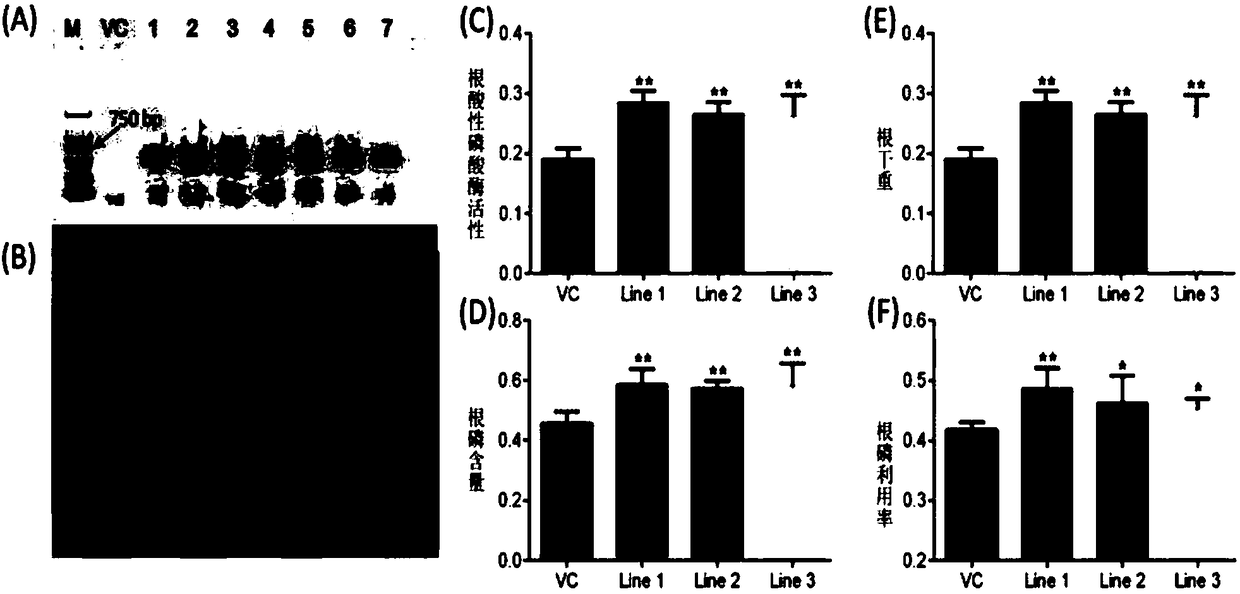Protein GmHAD1 related to plant stress tolerance and encoding gene and application thereof
A stress tolerance, plant technology, applied in the field of genetic engineering, can solve problems such as limiting soybean growth and development, affecting soybean yield and quality, and falling flower pods
- Summary
- Abstract
- Description
- Claims
- Application Information
AI Technical Summary
Problems solved by technology
Method used
Image
Examples
Embodiment 1
[0081] Example 1. Acquisition of Soybean Low Phosphorus Tolerance Related Protein GmHAD1 and Its Encoding Gene
[0082] 1. Acquisition of soybean low phosphorus tolerance related protein GmHAD1 and its coding gene
[0083] 1. Acquisition of cDNA
[0084] The plant total RNA extraction kit (TR02, GeneMark) was used to extract the root total RNA of soybean material Huachun No. 2 (low phosphorus tolerance variety), and its integrity was detected by 1% agarose electrophoresis; using PrimeScript TM RT reagent Kit with gDNA Eraser kit reverse transcription to synthesize cDNA.
[0085] 2. PCR amplification
[0086] Using the cDNA obtained in step 1 as a template, PCR amplification was performed using GmHAD1-F and GmHAD1-R primers to obtain a PCR product. The primer sequences are as follows:
[0087] GmHAD1-F: 5'-GGGGAAAACACTTTGGTC-3';
[0088] GmHAD1-R: 5'-AGTTACTGGTTGGCTTTG-3'.
[0089] The PCR reaction system (50μl system) is as follows: 2×Phanta Max Buffer (25μl), ddH 2 O (19...
Embodiment 2
[0110] Example 2, Obtaining GmHAD1 Gene-transferred Hairy Roots of Soybean and Analysis of GmHAD1 Gene Function
[0111] 1. Obtaining hairy roots of transgenic GmHAD1 soybean
[0112] 1. The full-length sequence of the GmHAD1 gene shown in Sequence 1 is forward inserted between the Xba I and Sac I restriction sites of the pTF101.1 vector to construct the recombinant plant expression vector pTF101.1-GmHAD1. The structural diagram of the recombinant plant expression vector pTF101.1-GmHAD1 is shown in figure 2 As shown, it can be seen from the figure that the GmHAD1 gene is located behind the CaMV35S promoter, and the CaMV35S promoter is used to promote the expression of the GmHAD1 gene.
[0113] 2. Transform pTF101.1 and pTF101.1-GmHAD1 into Agrobacterium rhizogenes K599 (purchased from BioVector NTCC Inc.) with a Bio-rad electric shock transformation instrument, and then transform soybeans through the K599 Agrobacterium rhizogenes-mediated transformation method , to obtain t...
Embodiment 3
[0136] Embodiment 3, the acquisition of transgenic Arabidopsis thaliana and the functional analysis of GmHAD1 gene
[0137] 1. Obtaining the transgenic Arabidopsis thaliana
[0138] 1. Transform the recombinant expression vector pTF101.1-GmHAD1 in Example 2 into GV3101 (purchased from Guangzhou Chunni Biotechnology Co., Ltd., item number AC1001S) by freeze-thaw method to obtain the Agrobacterium containing pTF101.1-GmHAD1, and use for infecting Arabidopsis plants.
[0139] 2. Agrobacterium containing pTF101.1-GmHAD1 was used to infect wild-type Arabidopsis thaliana (Columbian ecotype col-0) by flower dipping method. Harvest T 1 The surrogate seeds were planted on nutrient soil and sprayed with 10 mg / L glufosinate-ammonium (purchased from Yisheng Biotechnology Co., Ltd., product number 60221ES03) for screening. The next generation produced by the screened seedlings is screened again, and so on, and finally T 3 The homozygous line of Arabidopsis thaliana was transformed into...
PUM
 Login to View More
Login to View More Abstract
Description
Claims
Application Information
 Login to View More
Login to View More - R&D Engineer
- R&D Manager
- IP Professional
- Industry Leading Data Capabilities
- Powerful AI technology
- Patent DNA Extraction
Browse by: Latest US Patents, China's latest patents, Technical Efficacy Thesaurus, Application Domain, Technology Topic, Popular Technical Reports.
© 2024 PatSnap. All rights reserved.Legal|Privacy policy|Modern Slavery Act Transparency Statement|Sitemap|About US| Contact US: help@patsnap.com










